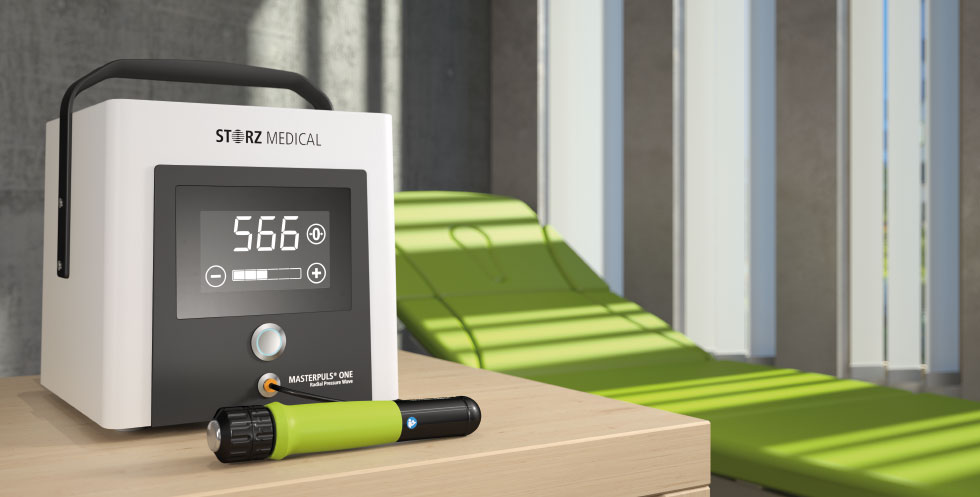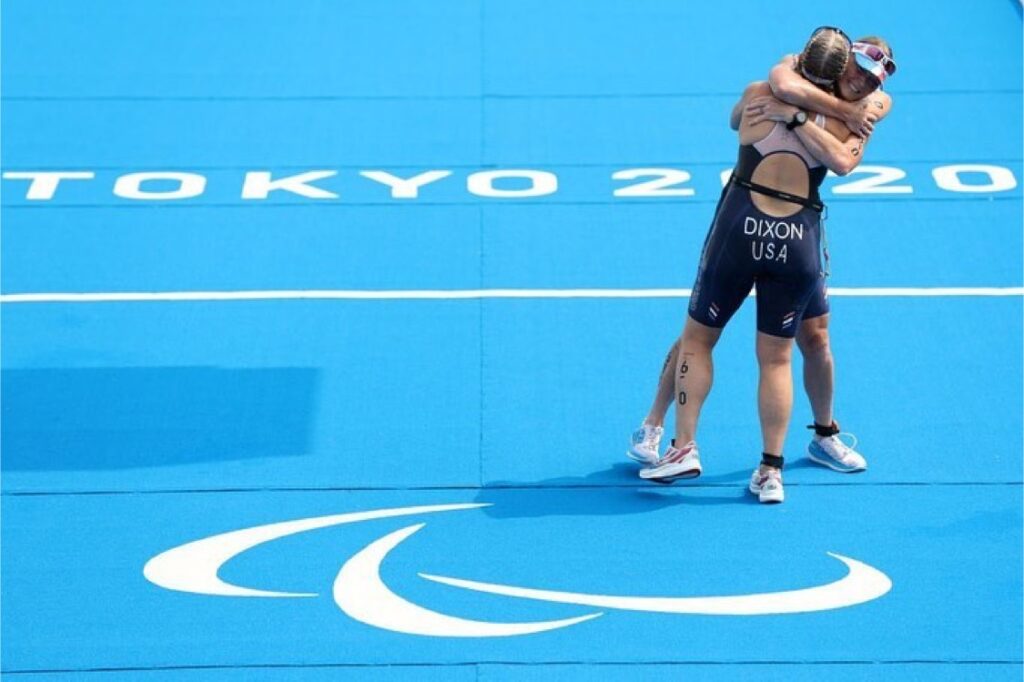My name is Amy Dixon, and I’m a blind member of the US Paratriathlon National Team in the Visually Impaired category. I lost my sight due to a rare disease associated with Juvenile Rheumatic Arthritis (JRA) which began at age 22. Due to a faulty immune system, my body attacks my retina and my GI Tract, lungs and joints whenever I’m exposed to a bacteria or virus and when under heavy stress either physical or emotional.

As a professional athlete, I’ve dedicated the past 7 years of my life, 6-8 hours per day 6-7 days per week, to making my first Paralympic Team at the Summer Games in Tokyo 2020. As you all know, the pandemic delayed racing and the Games an entire year. For some athletes, particularly young and up and coming athletes, this was a tremendous advantage, allowing them additional time to gain crucial experience and additional training. For this of us ‘of a certain age’ (I’m 45), this proved a unique challenge of keeping my fitness at a level to be competitive with 20 year-olds who I race against, and to maintaining my health during a global pandemic.
July of 2020 I was in the peak shape of my life. I was running faster than ever before, Swimming more than 4000 yards a day, and biking at my best ever power numbers. I was ready to unleash years of training on the course in Tokyo. But it wasn’t meant to be. Last August, I awoke one morning to excruciating pain in my right shoulder. Confused, I wondered how on earth I could have this pain. Did I sleep on it wrong? Do something weird while lifting weights? No, I thought to myself. This was odd. As the week went on, the pain got worse. I couldn’t lift my coffee cup or even put on a shirt. One morning I woke up and my arm was numb. The shoulder was so swollen that it was dislocated. I took Tylenol and popped it back into the joint, then called the Orthopedic Surgeon.
After an MRI, he called me to his office and asked, “when was the last time you saw your Rheumatologist?” I sighed and shook my head. I knew where this was going. My disease was out of remission. After a failed Cortisone injection and a VERY expensive PRP (platelet rich plasma) injection, I began chemotherapy and immunosuppressive drugs to stop the inflammation and extreme swelling. It didn’t work. To complicate matters, I have a rare bone disorder called hypophosphatasia which causes very soft bones. After only four weeks of multiple dislocations, my collarbone looked like I had been shot. Dozens of bone fragments scattered throughout the repeat MRI. I needed surgery right away.
The surgery was a success. Four hours of cutting away lots of scar tissue and removing most of my soft collarbone by shaving it down was complete. I began the long recovery to get ready for Tokyo in 10 months. I was back in the pool swimming with one arm after three weeks. I was walking and biking with one arm in a sling. I went to PT three days per week. I took Percocet every 4 hours even during the night. I was determined to get back to full training by December 1.

I was finally back to running (on a lot of pain meds) and found myself really out of breath one early December morning. I had a video visit with my pulmonologist who advised me to go to the ER. I declined and said I was pretty sure it was just my asthma and that I’d be fine. She told me to take my nebulizer, and if it didn’t work to head to the ER. She ordered a blood test, and I walked immediately down the street to Labcorp. Halfway there, I was so winded I had to sit down on the sidewalk to catch my breath. I was an elite athlete, one of the top 5 in the world in triathlon and I couldn’t even walk a quarter mile. Something was up. The next morning, I had another video visit with my Rheumatologist. I was so winded I could hardly finish a sentence. She told me to hang up the phone and go straight to the hospital. I thought she was being dramatic, but begrudgingly I went.
As I entered the ER, I got a text notification from the lab that my results were in. At that moment, the triage nurse saw them come through the patient portal on the screen. Her face went white and she paged the ER doctor stat. I was rushed back into an emergency CT scan with contrast. 30 minutes later a doctor walked into my room and told me that I was a very lucky young woman and that It was a good thing I that I’m an athlete. I had multiple pulmonary emboli in both lungs and very low oxygen. Most mortals would have passed out at that level, but due to my fitness, I somehow survived the clots.
I spent days in the ICU on blood thinners and the next two months on the hardest recovery imaginable. I lost 25% of my lung function due to a resulting infarction, where part of the tissue dies. My shoulder was still an 8/10 on a pain scale and I was living on pain meds, nerve blocks and cortisone injections. Despite aggressive PT, Active release technique, acupuncture, massage and chiropractic, I was not improving and heartbroken and frustrated from being in constant pain.
I was referred to one of the top sports medicine doctors in the country, Dr Katherine Ackerman at Bostin Children’s Hospital. I flew as soon as her first appointment became available and cried in her office to her and her whole team. As a professional athlete, I couldn’t take oral steroids. Pain meds were not a good long term solution. And PT was getting me nowhere but in more pain. I was desperate for answers. She took one look at her colleague and they both said simultaneously, “Have you tried Shock Wave Therapy?”
As an athlete on the US National Team, I had been offered every type of treatment imaginable. But this was the first time I had heard of such a protocol. My doctor looked into three practitioners in my area of San Diego who owned machines, and suggested I try them out for 6 treatments and see if I had improvement with my pain levels and mobility in the pool. I was finally hopeful. My first treatment went great. The shoulder was sore but I had immediately more mobility. I went back twice per week for the first three weeks and my pain went from an 8 down to a 4 for the first time in 7 months. I was so relieved I cried. There was hope.

At my next PT appointment, they were ecstatic. What had taken months of medications and exercises to achieve, suddenly happened seemingly overnight. I went from narcotics every four hours to once every few days. I began swimming with less pain and able to complete workouts of more than 3000 yards several days per week. I needed less and less manual therapy, which had drained my bank account. I was on my way to begin racing again to qualify for the Paralympic Games in only four months. Time was finally back on my side.
I continued shock wave therapy treatments twice weekly and saw my swim times get faster and faster. I ditched the pain meds and graduated to only Tylenol periodically. My entire mood and outlook changed. I could put on a bra by myself without calling my neighbor for help. I could fold laundry myself for the first time in months. I could put on my backpack without thinking. Life just got better.
The next step was having regular access to a shock wave machine. I contacted Kinas Medical Technologies through a friend, who is on the US Team with me and happens to be a physical therapist, as well. They were the technology provider my doctors had been using for shock wave equipment, and my friend told me they offer training and support with their units, which is what I needed. After meeting with the amazing team there, I knew Kinas Medical was the right fit for a partnership as I prepared for the Tokyo Paralympics. In order to stay healthy and continue making progress without medication, shock wave would become part of my team to Tokyo.

On June 27th, I crossed the line at the Pan American Championships with a bronze medal, thus punching my ticket to Japan. The best part? I had done it pain free for the first time in almost ten months. Two months later, I was running down the finish chute at the Tokyo Paralympic Games. I had made it. 7 years of hard work almost became completely derailed due to my disease. Thanks to Kinas Medical’s shock wave machines, I not only won the battle, I won the war.
